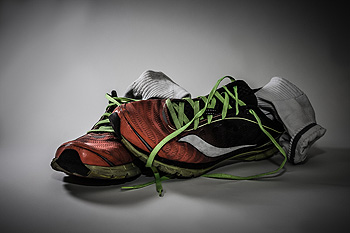Elevated blood sugar levels are the main cause of diabetes. People who have this condition have to pay extra attention in caring for their feet. Diabetic patients may experience a tingling feeling or numbing sensation, and this can make it difficult in noticing any cuts that may be present on the feet. This type of nerve damage can lead to an infection and can cause gangrene if it is not treated promptly. Typical symptoms of a foot infection can include fever, unmanageable blood sugar levels, and skin discoloration. If you are a diabetic patient and would like information about taking care of your feet, it is advised to seek the counsel of a podiatrist who can properly guide you.
Diabetic foot care is important in preventing foot ailments such as ulcers. If you are suffering from diabetes or have any other concerns about your feet, contact one of our podiatrists from San Antonio New Step. Our doctors can provide the care you need to keep you pain-free and on your feet.
Diabetic Foot Care
Diabetes affects millions of people every year. The condition can damage blood vessels in many parts of the body, especially the feet. Because of this, taking care of your feet is essential if you have diabetes, and having a podiatrist help monitor your foot health is highly recommended.
The Importance of Caring for Your Feet
Patients with diabetes should have their doctor monitor their blood levels, as blood sugar levels play such a huge role in diabetic care. Monitoring these levels on a regular basis is highly advised.
It is always best to inform your healthcare professional of any concerns you may have regarding your feet, especially for diabetic patients. Early treatment and routine foot examinations are keys to maintaining proper health, especially because severe complications can arise if proper treatment is not applied.
If you have any questions please feel free to contact one of our offices located in San Antonio, TX. We offer the newest diagnostic and treatment technologies for all your foot and ankle needs.
Read more about Diabetic Foot Care Research has indicated 1 billion people in the world are obese.This may play a significant role in causing uncomfortable foot conditions.This is a result of the added weight the feet must endure while completing daily activities. Obese patients may find difficulty in finding shoes that fit correctly, and this leads to foot pain. Additionally, performing regular exercise is helpful in losing extra weight. People who are overweight will find it beneficial to start an exercise routine slowly, and gradually increase the frequency. Walking is considered to be an excellent form of exercise, in addition to cycling, swimming, or weight lifting. If you would like more information about how obesity affects the feet, please consult a podiatrist who can provide you with the proper information.
Research has indicated 1 billion people in the world are obese.This may play a significant role in causing uncomfortable foot conditions.This is a result of the added weight the feet must endure while completing daily activities. Obese patients may find difficulty in finding shoes that fit correctly, and this leads to foot pain. Additionally, performing regular exercise is helpful in losing extra weight. People who are overweight will find it beneficial to start an exercise routine slowly, and gradually increase the frequency. Walking is considered to be an excellent form of exercise, in addition to cycling, swimming, or weight lifting. If you would like more information about how obesity affects the feet, please consult a podiatrist who can provide you with the proper information.
The more you weigh, the harder your feet must work to support your body. If you’re an obese individual and are concerned about your feet, contact one of our podiatrists from San Antonio New Step. Our doctors can provide the care you need to keep you pain-free and on your feet.
Obesity and Your Feet
People who are overweight are putting more pressure on their ankles, knees, and hips as well as their feet. This unfortunately can lead to variety of different issues.
Problems & Complications Stemming from Obesity
If you have any questions, please feel free to contact one of our offices located in San Antonio, TX. We offer the newest diagnostic and treatment technologies for all your foot care needs.
Read more about Obesity and the Feet The common condition that is referred to as toenail fungus is considered to be contagious. The virus that causes this fungus lives in moist and warm environments. These often include public swimming pools, shower room floors, and locker rooms. When appropriate shoes are worn while in these areas, the possibility of getting toenail fungus may diminish. Additionally, this condition may develop if the nails are wet for the majority of day, which is often caused by wearing sweaty shoes and socks. Some of the symptoms that are associated with toenail fungus often include thick and brittle nails, and patients may find the affected nail has turned yellow or brown. Treatment can be effective if this type of fungus is diagnosed when it is first noticed. If you are afflicted with toenail fungus, it is suggested to schedule an consultation with a podiatrist who can properly treat this ailment.
The common condition that is referred to as toenail fungus is considered to be contagious. The virus that causes this fungus lives in moist and warm environments. These often include public swimming pools, shower room floors, and locker rooms. When appropriate shoes are worn while in these areas, the possibility of getting toenail fungus may diminish. Additionally, this condition may develop if the nails are wet for the majority of day, which is often caused by wearing sweaty shoes and socks. Some of the symptoms that are associated with toenail fungus often include thick and brittle nails, and patients may find the affected nail has turned yellow or brown. Treatment can be effective if this type of fungus is diagnosed when it is first noticed. If you are afflicted with toenail fungus, it is suggested to schedule an consultation with a podiatrist who can properly treat this ailment.
For more information about treatment, contact one of our podiatrists of San Antonio New Step. Our doctors can provide the care you need to keep you pain-free and on your feet.
Toenail Fungus Treatment
Toenail fungus is a condition that affects many people and can be especially hard to get rid of. Fortunately, there are several methods to go about treating and avoiding it.
Antifungals & Deterrence
Oral antifungal medicine has been shown to be effective in many cases. It is important to consult with a podiatrist to determine the proper regiment for you, or potentially explore other options.
Applying foot powder on the feet and shoes helps keep the feet free of moisture and sweat.
Sandals or open toed shoes – Wearing these will allow air movement and help keep feet dry. They also expose your feet to light, which fungus cannot tolerate. Socks with moisture wicking material also help as well.
If you have any questions please feel free to contact one of our offices located in San Antonio, TX. We offer the newest diagnostic tools and technology to treat your foot and ankle needs.
Read more about Toenail Fungus Babies feet are interesting to observe. They are soft and flexible until the bones become stronger. Research has indicated it is beneficial for young children to walk barefoot indoors, as this helps to strengthen the feet. When the toes grasp the floor, the muscles, ligaments, and tendons in the feet become stronger, and enable the feet to develop normally. It is helpful to measure your child's feet approximately every other month up to the age of three years old so the correct size shoes can be fitted on their rapidly growing feet. The risk of potential skin conditions occurring may be reduced when the shoes are aired out overnight, and clean cotton socks are worn. Most babies are born with flat feet, and the arch will normally be present when the child is six or seven years old. If you notice walking abnormalities or if the arch in the foot has not properly developed, it is advised to consult with a podiatrist who can examine your child’s feet.
Babies feet are interesting to observe. They are soft and flexible until the bones become stronger. Research has indicated it is beneficial for young children to walk barefoot indoors, as this helps to strengthen the feet. When the toes grasp the floor, the muscles, ligaments, and tendons in the feet become stronger, and enable the feet to develop normally. It is helpful to measure your child's feet approximately every other month up to the age of three years old so the correct size shoes can be fitted on their rapidly growing feet. The risk of potential skin conditions occurring may be reduced when the shoes are aired out overnight, and clean cotton socks are worn. Most babies are born with flat feet, and the arch will normally be present when the child is six or seven years old. If you notice walking abnormalities or if the arch in the foot has not properly developed, it is advised to consult with a podiatrist who can examine your child’s feet.
Making sure that your children maintain good foot health is very important as they grow. If you have any questions, contact one of our podiatrists of San Antonio New Step. Our doctors can provide the care you need to keep you pain-free and on your feet.
Keeping Children's Feet Healthy
Having healthy feet during childhood can help prevent medical problems later in life, namely in the back and legs. As children grow, their feet require different types of care. Here are some things to consider...
Although babies do not walk yet, it is still very important to take care of their feet.
Avoid putting tight shoes or socks on his or her feet.
Allow the baby to stretch and kick his or her feet to feel comfortable.
As a toddler, kids are now on the move and begin to develop differently. At this age, toddlers are getting a feel for walking, so don’t be alarmed if your toddler is unsteady or ‘walks funny’.
As your child gets older, it is important to teach them how to take care of their feet.
Show them proper hygiene to prevent infections such as fungus.
Be watchful for any pain or injury.
Have all injuries checked by a doctor as soon as possible.
Comfortable, protective shoes should always be worn, especially at play.
If you have any questions please feel free to contact one of our offices located in San Antonio, TX. We offer the newest diagnostic and treatment technologies for all your foot and ankle needs.
Read more about How to Care for Your Child's Feet Shoes are designed for different functions, and it is beneficial to wear the correct shoes for running and walking. Shoes that are ideal for walking will have rounded heels, and provide the proper amount of stability. This can enable the walker to maintain flexibility as each step is taken. If speed walking is favored, it is helpful to wear shoes that have adequate cushioning, which aids in shock absorption. For people who prefer running, the shoe should consist of a thicker sole, and are made with materials that are lightweight. Additionally, running shoes provide complete arch support, and will help to protect the muscles and ligaments of the feet. If you would like additional information about how to choose walking or running shoes, it is suggested that you consult with a podiatrist.
Shoes are designed for different functions, and it is beneficial to wear the correct shoes for running and walking. Shoes that are ideal for walking will have rounded heels, and provide the proper amount of stability. This can enable the walker to maintain flexibility as each step is taken. If speed walking is favored, it is helpful to wear shoes that have adequate cushioning, which aids in shock absorption. For people who prefer running, the shoe should consist of a thicker sole, and are made with materials that are lightweight. Additionally, running shoes provide complete arch support, and will help to protect the muscles and ligaments of the feet. If you would like additional information about how to choose walking or running shoes, it is suggested that you consult with a podiatrist.
For more information about walking shoes versus running shoes, consult with one of our podiatrists from San Antonio New Step. Our doctors can measure your feet to determine what your needs are and help you find an appropriate pair of footwear.
Foot Health: The Differences between Walking & Running Shoes
There are great ways to stay in shape: running and walking are two great exercises to a healthy lifestyle. It is important to know that running shoes and walking shoes are not interchangeable. There is a key difference on how the feet hit the ground when someone is running or walking. This is why one should be aware that a shoe is designed differently for each activity.
You may be asking yourself what the real differences are between walking and running shoes and the answers may shock you.
Differences
Walking doesn’t involve as much stress or impact on the feet as running does. However, this doesn’t mean that you should be any less prepared. When you’re walking, you land on your heels and have your foot roll forward. This rolling motion requires additional support to the feet.
Flexibility – Walking shoes are designed to have soft, flexible soles. This allows the walker to push off easily with each step.
If you have any questions, please feel free to contact one of our offices located in San Antonio, TX. We offer the newest diagnostic and treatment technologies for all your foot care needs.
Read more about Differences between Walking and Running Shoes